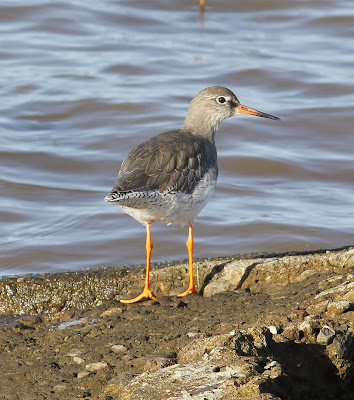Yahoo 24 October 2013 - A thrifty couple will not be putting their clocks back this weekend - because it saves money on their energy bills. Retired John and Janys Warren, from Somerset live 'in the future' an hour ahead of everybody else and save a third on their gas and electricity bills. The couple stopped putting their clocks back five years ago when they realised the darker and shorter days were triggering John's headaches. Living on British Summer Time all year round meant his headaches eased, they could enjoy an extra hour of daylight and save money. Janys said: "We have lower fuel bills and far more usable daylight hours with evenings not seeming endless. We don't put the heating on until we get up and by then it is warmer anyway. We've saved about one third on our heating and lighting bills.”
For what it's worth here’s my advice you stingy, sad, and foolish people - get up early and go for a brisk walk outdoors with a warm coat, a hat and scarf and a pair of binoculars. In the evenings J and J, complete your notes from the day’s birding and update your birding blog - simple. Not only will you save money, you will be healthier in mind and body and maybe get a life into the bargain.
I put my clock back. The extra hour of birding proved warming, time consuming, energising and very enjoyable despite the frequent showers and strong winds.
My start was early enough to see if the Little Egrets at the Pilling roost had remembered to turn their clocks back last night. The answer was that they got up at first light as normal dispersing in various directions, all 24 of them.
Red-breasted Mergansers turn up on Fylde coastal waters at this time of year where they can be seen throughout the winter, often drifting in towards the shore with incoming high tides. They also favour a very few coastal and spacious marine lakes, so imagine my surprise to find one in a ditch behind the sea wall. Even better, Red-breasted Merganser is a species which normally keeps a very respectable distance from birders or photographers.
Red-breasted Merganser
Red-breasted Merganser
The Latin name of this duck Mergus serrator is highly descriptive, Mergus being the genus of typical mergansers, fish-eating ducks in the seaduck subfamily (Merginae). The “serrator” refers to the long, serrated bills used for catching fish. Their diet of fish such as salmon and trout brings them into conflict with anglers and fish farmers whereby the species is often classified as a pest and may be shot. Those folk with guns, they don’t miss many opportunities to attach a label do they?
When I got to Conder Green there was a family party of Goosander Mergus merganser in the roadside creek, an adult pair and 2 first winters. The male stayed apart from the others just too far to include in a picture but the female has the darker head, the juveniles noticeably paler. Out of interest, and to limit any possible misunderstanding here, this member of the Mergus family of birds is known as Common Merganser in North America and Goosander on this side of the Atlantic. Like the smaller Red-breasted Merganser, the Goosander is also subject to persecution by anglers and fish farmers.
Goosander
A Spotted Redshank was in the creek again perhaps the same bird of late, more likely not and just one the many thousands passing this way in the autumn en route to winter in Central Africa?
Spotted Redshank - Breeding, Migration and Wintering from Wetlands.org
Spotted Redshank
I walked along the railway path and over the bridge and found a Common Sandpiper feeding along the edge of the creek below, so too a Grey Wagtail and a Little Egret. Along the same path was a party of 18+ Long-tailed Tits with a couple Greats and Blues, plus a single Chiffchaff.
A flight of 3 Pintail heading west was perhaps slightly out of the ordinary just here.
On the pool and creeks, 90+ Teal and just 10 Little Grebe, as grey and drab as the winter months decree, and no requirement to display that little white beauty spot until the clocks go forward in March 2014.
Little Grebe
There’s a sleepover tonight, no not me but our two lively granddaughters Olivia and Isabella.
Wish me luck as I’ll certainly be woken up early on Monday morning and may well lose an hour or two of sleep.
Wish me luck as I’ll certainly be woken up early on Monday morning and may well lose an hour or two of sleep.


































































.jpg)














